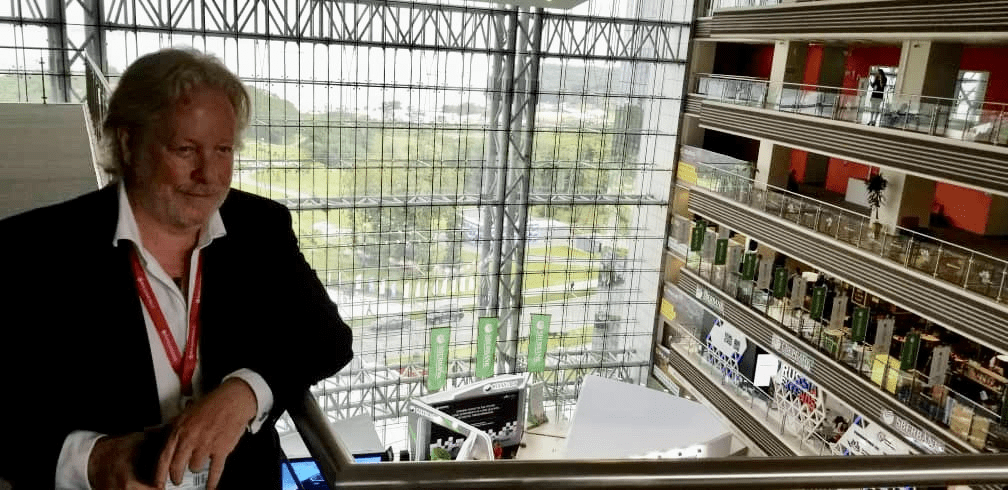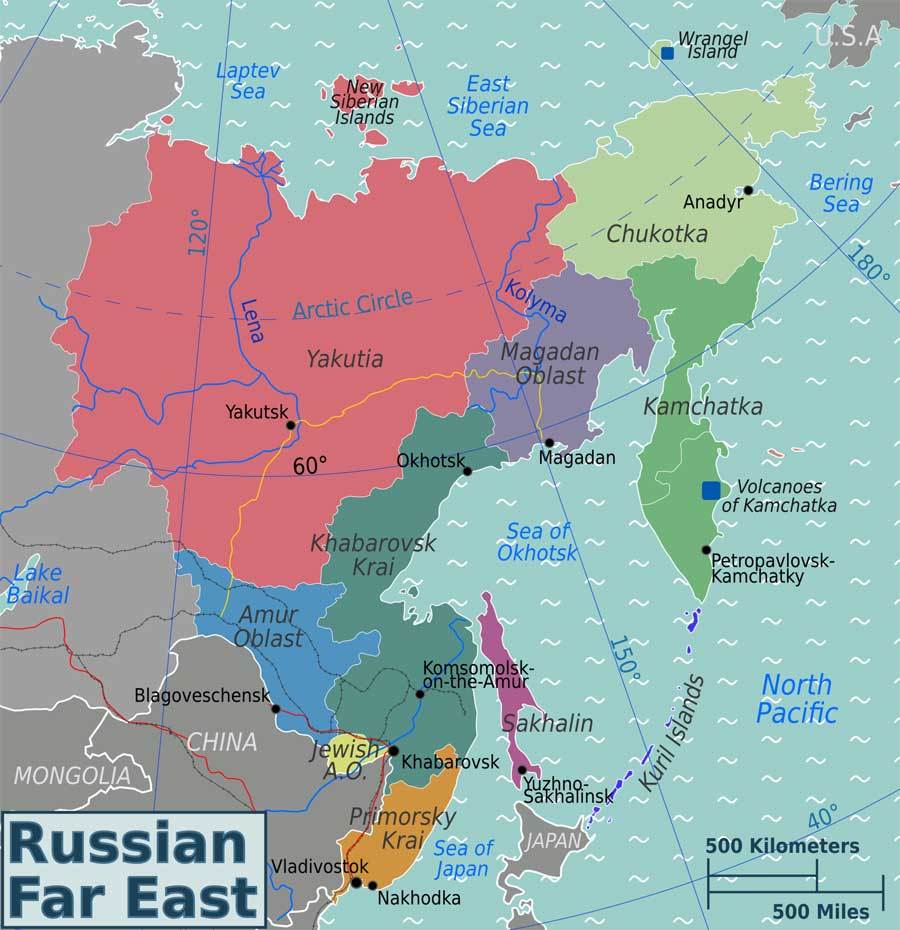Vladivostok: The Russian Port Serving The Belt & Road’s North-East Asian Axis
North China, Japan and Korea All Rely On Vladivostok For Eurasian Trade
 Chris Devonshire-Ellis at the Far Eastern Federal University, Vladivostok
Chris Devonshire-Ellis at the Far Eastern Federal University, Vladivostok
Op/Ed by Chris Devonshire-Ellis
The Russian President, Vladimir Putin gave an extensive speech at the Plenary session of the Far Eastern Economic Forum in Vladivostok last week as he outlined plans to develop the city as a strategic hub within North-East Asia.
The President mentioned that Vladivostok and much of Russia’s Far East had been militarized during the Cold War and little social or lifestyle infrastructure had been invested in the region prior to the late 1990’s. It had only really been open for business and trade for twenty years, and even during much of that time had been managed by officials who had grown up during the Soviet years and had possessed that similar mentality. Now, he said, the Far East region attracted 32% of all FDI into Russia and the country needed to react to improving the ability for Russians, tourists and foreign business people to visit, live and work there. Extensive funds had been invested in Vladivostok the past five years, he said, and the Far East Russian region as a whole had by far the largest amount of tax incentives in Russia to spur development. But still more needed to be done, he added.
Russia’s Far East had long suffered from younger residents leaving for opportunities elsewhere, and this trend needed to be reversed he said, although there were signs that more young people were opting to stay. The birth rate today in the Russian Far East was now higher than the national average, he said. To continue to support the redevelopment of Vladivostok and the Russian Far East President Putin laid out several State Level objectives that would kick in and address these issues:
- Construction and heating designs and contractors would be improved for housing projects using latest improvements in efficiency and eco-friendly technologies;
- Special mortgages for Russian buyers in Vladivostok would be made available at just 2% interest rates for the next five years;
- Medical and healthcare centers would be established and opened up to foreign investment;
- Salaries would be doubled for medical professionals and doctors in Russia’s Far East;
- Education facilities would be improved and access to distance learning provided;
- Internet connections, coverage and speed would all be 5G advanced and was being implemented;
- Better definition and controlled boundaries would be introduced across Russia’s wildlife parks and reserves;
- More cultural centres, museums, theatres and art galleries would be opened;
- The maritime and hi-tech industries would receive additional funding, paid for by higher export taxes on Russian lumber;
- The eco-tourism industry would be encouraged and invested in, PPP investments in the industry would be permitted and opened up to foreign investment;
- A new tourist cruise line will be launched, titled “Pacific Russia” which will provide services from Vladivostok and take in the North-East Russian regions of Primorsky Krai, Sakhalin, Kamchatka and Chukotka in the Arctic.
- 40 regional airports in the Russian Far East would be upgraded;
- The creation of a new VC Fund for the development of Far East Asia was being discussed and should be launched next year.
Some of these initiatives had already been implemented, with more to come, he stated. Vladivostok was already home to the Far Eastern Federal University with a campus overlooking the Pacific Ocean, already home to 20,000 students of which 3,000 were foreign. The Mariinsky Theatre has also opened a Vladivostok based “Primorsky Stage” which was already showing Opera and Ballet in the city centre, while air connectivity and transport facilities were and are all being improved.
Mentioning that the GDP growth in Russia’s Far East was 3 times higher than the Russian national average, President Putin also mentioned that an international campaign would start to be implemented with the opening of more Russian cultural and exchange centres in more overseas locations. He said the Russian Far East would develop and become a global centre of how to balance economic development with eco-friendly business.
| Vladivostok-Asia Direct Flights | |
|---|---|
| City | Duration (hours) |
| Moscow | 9 |
| Beijing | 3 |
| Shanghai | 3.5 |
| Osaka | 2 |
| Tokyo | 2.2 |
| Busan | 2 |
| Seoul | 2.5 |
| Hong Kong | 5.5 |
| Bangkok | 7 |
Vladivostok also has direct flights to numerous cities across Russia.
| Shipping Times From Vladivostok | |
|---|---|
| City | Days |
| Shanghai | 5 |
| Hong Kong | 6 |
| Ho Chi Minh City | 10 |
| Singapore | 11 |
| Chennai | 15 |
Five Things You Didn’t Know About Vladivostok
- The Russky Island Bridge is the longest stayed cable suspension bridge in the world
- A two bed apartment with Ocean Views costs about US$150,000
- Ocean temperatures are between 15-20 degrees for the summer months – ideal for water sports and swimming
- Seafood from Kamchatka is among the worlds freshest and is far less expensive than elsewhere in China, Japan and South Korea
- Vladivostok has a simplified e-visa application process and can be visited for 8 days without requiring a full visa application.
Further intelligence on Far East Russia’s developing ties with India can be found here and with ASEAN here.
President Putin’s words ring true. The Russian Far East has extensive mineral, lumber and marine resources, attractive to foreign investors from China, Japan and South Korea. Further North-West, the LNG gas fields in the Arctic Ocean are being developed and are to become a major source of natural gas supplies for much of the North-East Asia region and beyond. India, where just 3% of households have access to gas, is becoming a major customer. Vladivostok also possesses major ship building yards, which are in the process of both designing new vessels and building them to take advantage of the new gas routes opening up in the Arctic. Such routes require a new class of vessels to be developed.
Vladivostok is also the main Port for the Trans-Siberian Land Bridge connecting Japan and South Korea with Russia and to markets across China, Central Asia and onto Europe.
In terms of the facilities, Vladivostok is still developing its infrastructure, and will need to amend its roads system – already subject to rush hour delays. However the city, with an extensive water front along several bays, is certainly going through a boom and this can be expected to continue. The waters are clean, and surprisingly warm in summer, yachting, waterskiing, kite and wind surfing in addition to other water sports and swimming are all perfectly feasible from the four months June-September. The Far Eastern Federal University has a beautiful campus overlooking the Ocean, while the Mariinsky Theatre’s Primorsky Stage is a world-class venue. It is possible for foreigners to buy property here. I have no doubt it will continue its development in both tourism and trade. Market researchers and businesses involved in trade development throughout China, Japan, South Korea, the ASEAN nations and India should all be looking at the new arrival of Vladivostok as a major, North-East Asian gateway, both to the easier North-East Asian access it provides , but also the potential for developing trade with Russia, where the Chinese and Russian Governments have both committed to doubling trade volume to US$200 billion in the next five years. That is a 20% growth rate per annum – and Vladivostok will be a major facilitator in this. That is especially pertinent given the down turn in trade China is enduring with the United States. Russia is also prepared to offer free land use rights in its Far East, and tax incentives to foreign investors, especially in the agricultural sector. Over 1 million hectares of arable land lie fallow in the region, and foreign investors are encouraged to use this resource to harvest plants and sell to both domestic and other North-East Asian markets. Food exports from Russia to China are undergoing significant growth at present.
For China business and trade consultants, and especially those used to dealing with Japan and South Korea – that is now no longer enough. The China trade aspect is what will project Vladivostok back into North-East Asia, and the time to be getting on board with that is now.
This article originally appeared on Russia Briefing, titled “Vladivostok & Russian Far East To Be Developed As Significant North-East Asian Resource & Trade Hub”
Related Reading
- China To Establish Heilongjiang Free Trade Zone Near Border With Russia
- Russia To Upgrade Mongolian Rail Links Between Russia And China, Joint Investment Fund Set Up
- Manzhouli-Russia Trade Heats Up
About Us
Silk Road Briefing is written by Dezan Shira & Associates. The firm assists foreign investors and advises Governments throughout Asia in facilitating trade and investment into the region, and maintains 28 offices throughout China, India, ASEAN and Russia. We also provide Belt & Road advisory and intelligence services. Please email us at silkroad@dezshira.com for enquiries or visit us at www.dezshira.com






